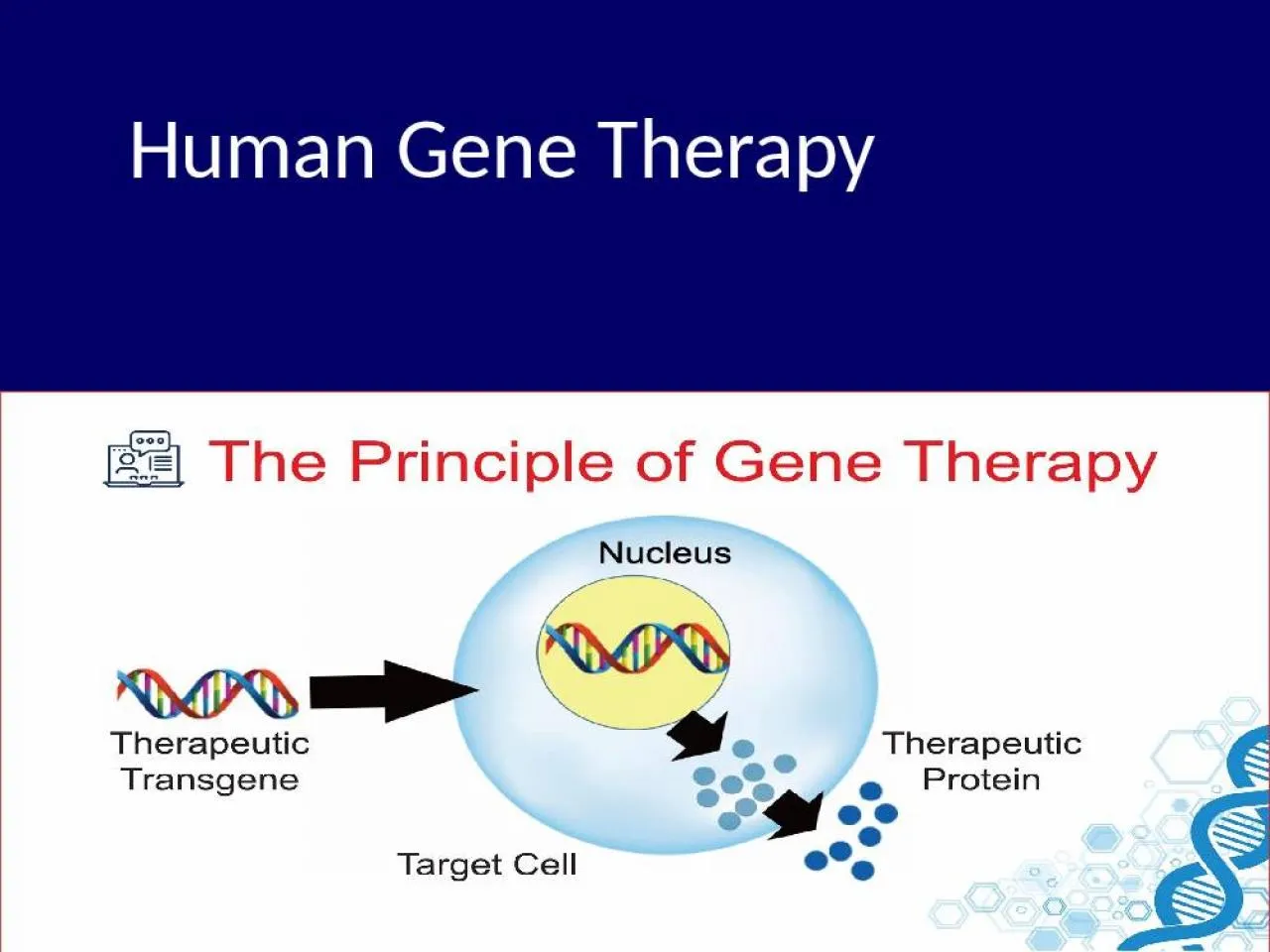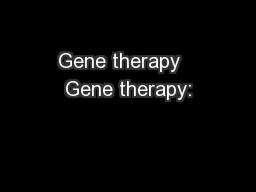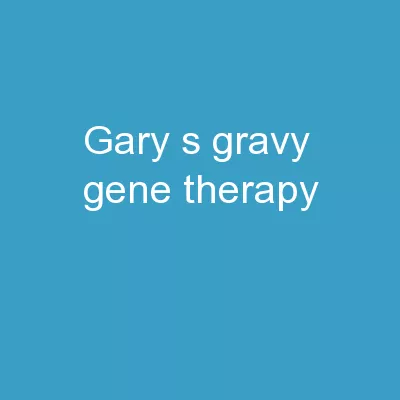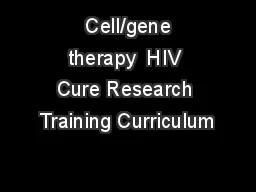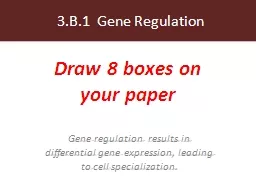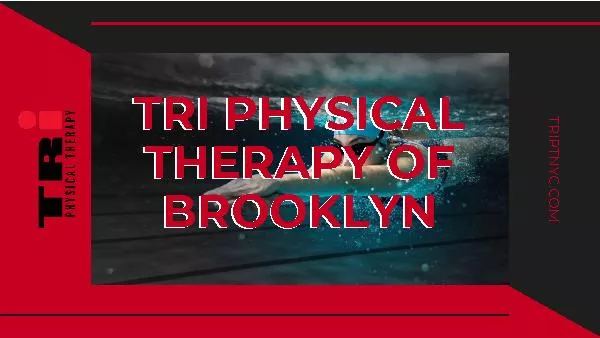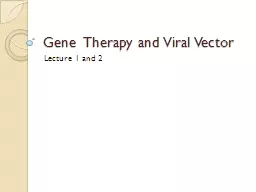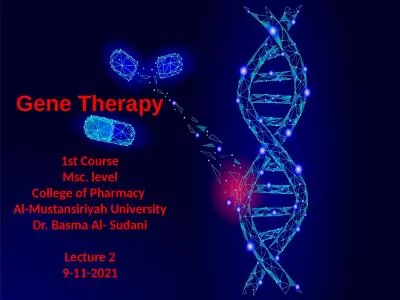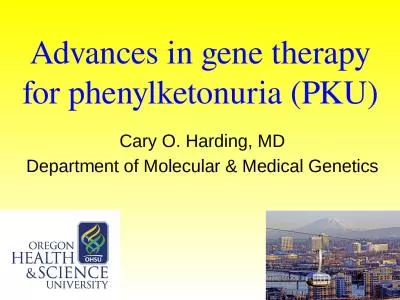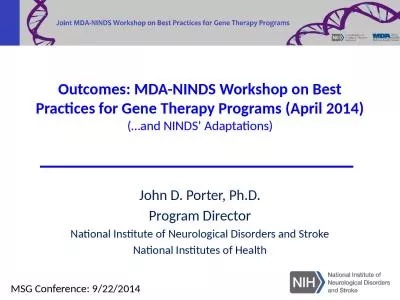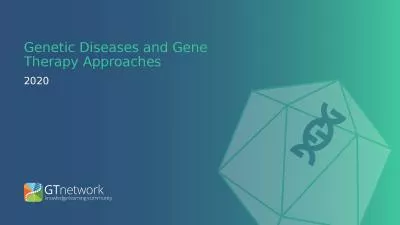PPT-Human Gene Therapy Introduction
Author : linda | Published Date : 2022-02-16
Genetic Counseling Treating Genetic Disease Removing an affected body part Replacing an affected body part or biochemical with material from a donor Delivering
Presentation Embed Code
Download Presentation
Download Presentation The PPT/PDF document "Human Gene Therapy Introduction" is the property of its rightful owner. Permission is granted to download and print the materials on this website for personal, non-commercial use only, and to display it on your personal computer provided you do not modify the materials and that you retain all copyright notices contained in the materials. By downloading content from our website, you accept the terms of this agreement.
Human Gene Therapy Introduction: Transcript
Genetic Counseling Treating Genetic Disease Removing an affected body part Replacing an affected body part or biochemical with material from a donor Delivering pure human proteins derived . INTRODUCTION. Most developments in biotechnology originated for their potential applications in health care.. Contribution of biotechnology:. Diagnosis of diseases. Therapeutic agents. Correction of genetic disease-Gene therapy. . Gene therapy: . to correct a . genetic defect . by transferring of a . functional normal copy. of the gene into cells. Examples of diseases caused by genetic defect. Ornithine . transcarbamylase. to correct a . genetic defect . by transferring of a . functional normal copy. of the gene into cells. Examples of diseases caused by genetic defect. Ornithine . transcarbamylase. (OTC deficiency). By Kole Drumheller and Austin Dillard. Gene Therapy. What is Gene therapy?. This is a technique that is designed to introduce new genetic material into cells to help fix abnormal genes or to make a new protein that will help the person.. Cell/Gene Therapy by: . Jeff Sheehy, the California Institute for Regenerative Medicine (CIRM). Jerome Zack, UCLA. Hans-Peter . Kiem. , The Fred Hutchinson Cancer Research Center. Jessica . Handibode. Draw 8 boxes on your paper. Gene regulation accounts for some of the phenotypic differences between organisms with similar genes.. 2005-2006. Gene regulation in bacteria. Control of gene expression enables individual bacteria to adjust their metabolism to environmental change. Come visit our advanced physical therapy clinic in Brooklyn and meet the best in class physical therapists and chiropractic rehabilitation specialists. Contact us: (718) 998-9877 Therapy of enzyme defects: general considerations. How many organs are affected by the enzyme defect: One organ, a few, or all organs?. How severe is the defect?. Can the defect be adequately controlled by conventional treatment?. Lecture 1 and 2. Gene Therapy. Definition: . the . introduction of normal genes into cells in place of missing or defective ones in order to correct genetic disorders. .. Approaches: . Replacing a mutated gene that causes disease with a healthy copy of the gene.. Propelled by the promise of faster, cheaper, and more accurate by CRISPR-Cas gene editing. For all of their ease and rapidity, cell or gene therapy. The generation of unintended DNA strand its niche w Msc. . . level. College of Pharmacy . Al-. Mustansiriyah. University. Dr. . Basma. Al- . Sudani. Lecture . 2. 9-11-2021. Table. . of Content. What Genes can do. Why Genetic Disorders. Law of Inheritance. Cary O. Harding, MD. Department of Molecular & Medical Genetics. Disclosures. BioMarin Corporation. Funds for participation in clinical trials. Sapropterin dihydrochloride. rAvPAL-PEG. National PKU Alliance. (…and NINDS’ Adaptations). John D. Porter, Ph.D.. Program Director. National Institute of Neurological Disorders and Stroke. National Institutes of Health. MSG Conference: 9/22/2014. 2. Gene Therapy's Second Act. 2020. Monogenic and Complex Diseases. Gene therapy is a promising approach for both monogenic and complex diseases. 1. 1. Wang D, Gau G. . Discov Med . 2014;18:151–161; 2. Ginn SL, et al. . J Gene Med.
Download Document
Here is the link to download the presentation.
"Human Gene Therapy Introduction"The content belongs to its owner. You may download and print it for personal use, without modification, and keep all copyright notices. By downloading, you agree to these terms.
Related Documents

